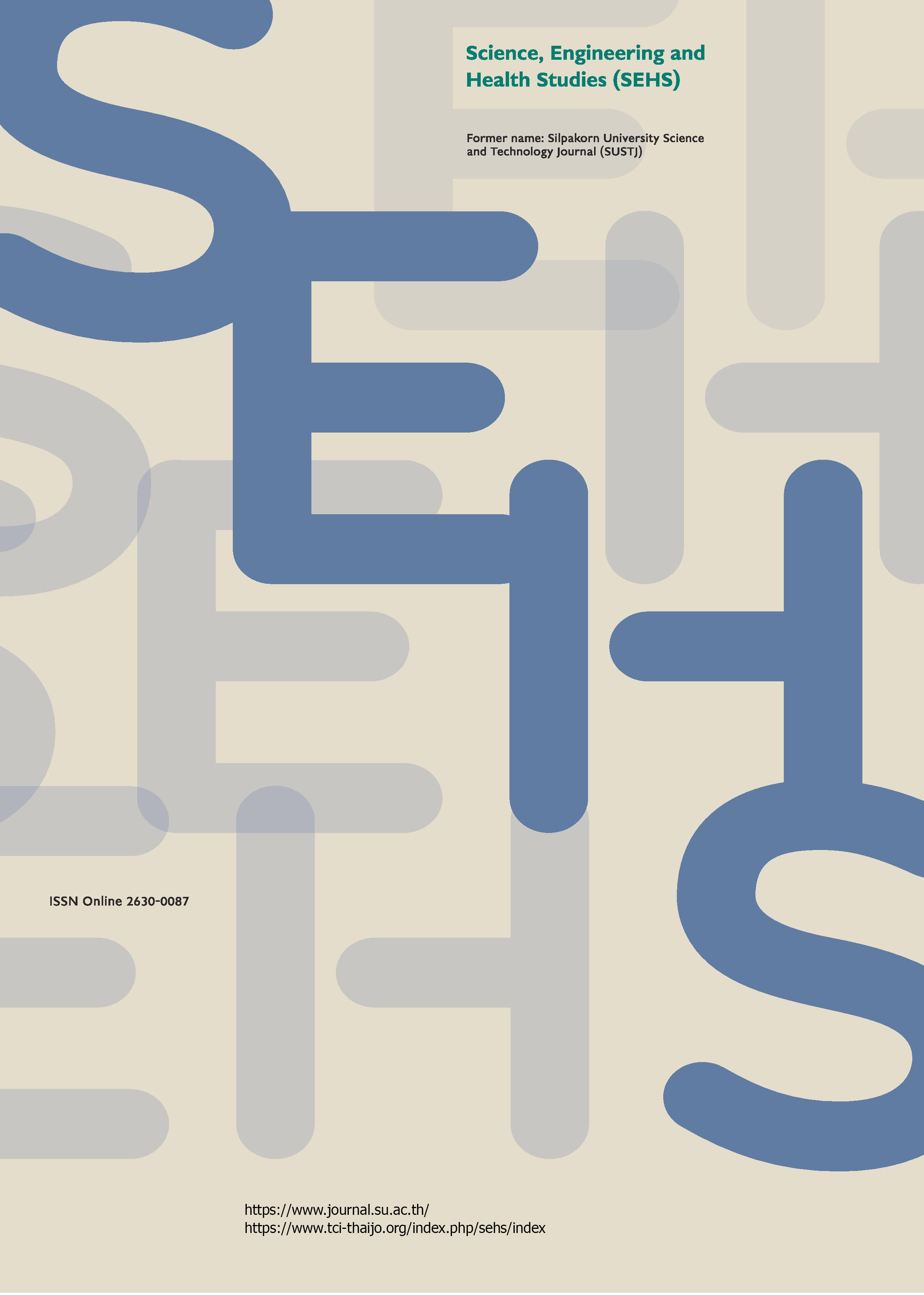A causal model of health promoting behaviors among university students
Main Article Content
Abstract
In this study, the consistency of an assessment model for students' health-promoting behaviors was accessed with the empirical data. The direct and indirect effects of variables on health-promoting behaviors among undergraduate students of Loei Rajabhat University were explored. Study tools included questionnaires for health-promoting behaviors, perceptual factors, influential factors, and personal attribute factors. Data were analyzed using basic statistics and linear structural equation analysis. The causal model of health-promoting behaviors among 360 students agreed with the empirical data. Health-promoting behaviors were significantly affected by influential factors, perceptual factors, and personal attribute factors and were indirectly affected by perceptual factors and personal attribute factors. Influential, perceptual, and personal attribute factors accounted for 87.5% of the variance of health-promoting behaviors.
Downloads
Article Details

This work is licensed under a Creative Commons Attribution-NonCommercial-NoDerivatives 4.0 International License.
References
Bandura, A. (1997). Self-Efficacy: The Exercise of Control. New York: W. H. Freeman and Company.
Isalam, T. (2014). Factors affecting the health promoting behaviors among the Thai elderly in Kohyao district, Phang Nga province. Region 11 Medical Journal, 8(1), 1-15.
Khamhaengphol, M., Pansila, W., and Siwina, S. (2017). Effects of self-care program with 2P. 4G. parade activities for health promotion of the elder in Kwangjon subdistrict health promotion hospital, Phukhieo district, Chaiyaphum province. Journal of Medicine and Health Sciences, 24(3), 33-43.
Konkaew, P., Suntayakorn, C., Prachanban, P., ad Wannapira, W. (2011). Factors predicting health promoting behaviors among civil servants with dyslipidemia. Journal of Nursing and Health Sciences, 5(3), 17-28.
National Statistical Office. (2011). The Smoking and Drinking Behavior Survey. Bangkok: National Statistical Office.
Office of the National Economic and Social Development Council. (2017). The Twelfth National Economic and Social Development Plan (2017-2021). Bangkok: Office of the Prime Minister.
Oungwattanaphaisan, K. (2006). Factors affecting health promoting behavior among officers in the Bureau of the Royal Household. Master’s thesis. Mahidol University, Thailand.
Panyasai, T., Tornee, S., and Sumpowthong, K. (2014). The mental health promotion evaluation form for depressive prevention in elderly in Chiang Rai. Journal of Medicine and Health Sciences, 21(3), 47-54.
Pender, N. J., Murdaugh, C. L., and Parsons, M. A. (2006). Health Promotion in Nursing Practice, 5th, New Jersey: Pearson Education, Inc., pp. 1-31.
Putthong, S. (2008). Predictive factors to health promoting behaviors of young adults. Master’s thesis. Chulalongkorn University, Thailand.
Saravirote, A., and Janyam, K., (2014). Factors influencing health promotion behavior of undergraduate students at Prince of Songkla University, Hat Yai Campus. Kasetsart Journal of Social Sciences, 35(2), 223-234.
Sutherasan, S., and Jumgpaiboonpatana, W. (2011). Factors influencing health promoting behaviors among professional nurses in the nursing service division of government university hospital. Journal of Nursing Science Chulalongkorn University, 35(2), 223-234.
Wattanakitkrileart, D., Saneha, C., Panitrat, R., Suvarnarong, K., Suebsuk, P., and Kedcham, D., (2011). Factors influencing health promotion behaviors of Thai police officers. Journal of Nursing Science, 29(2), 133-142.


